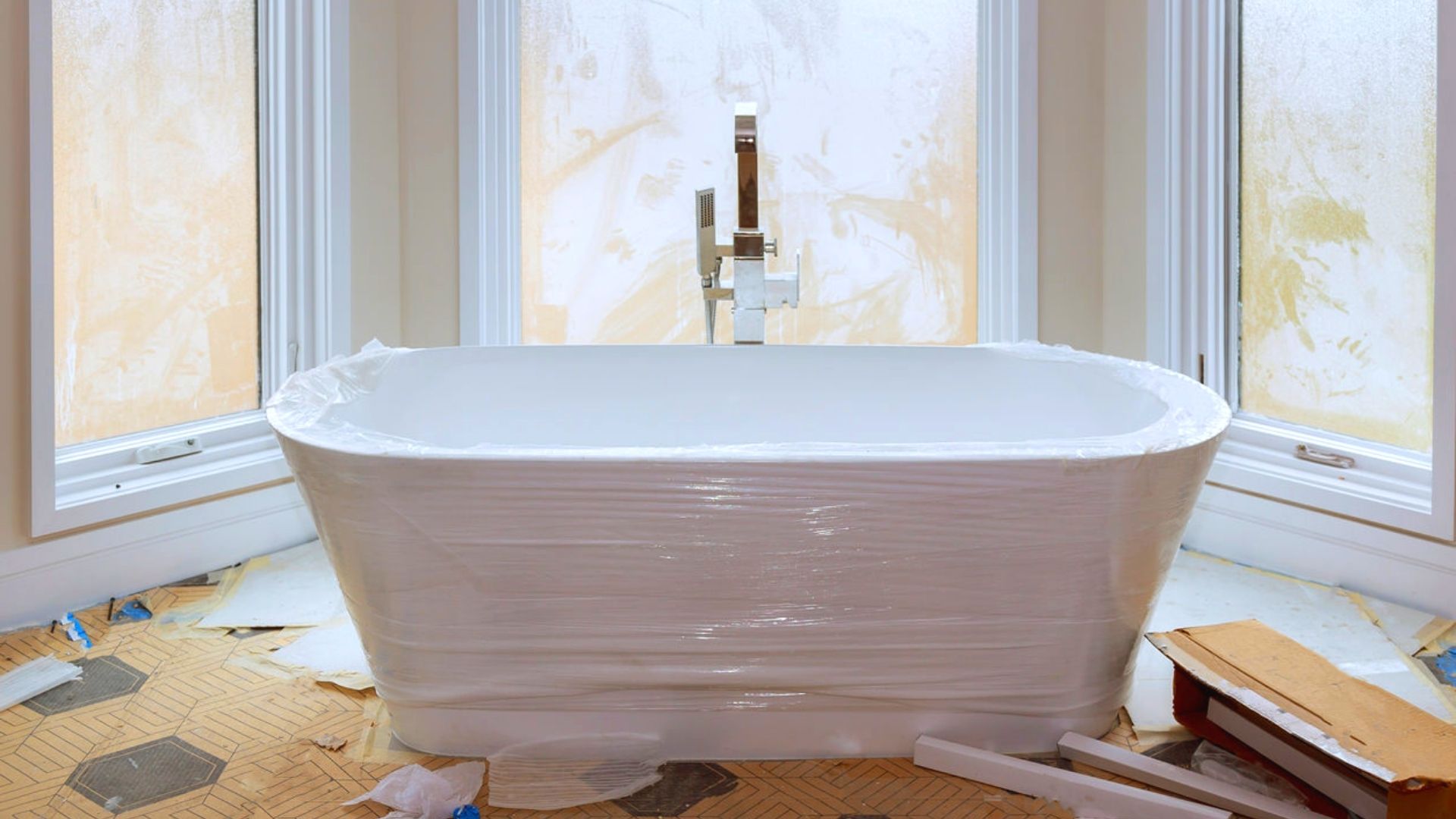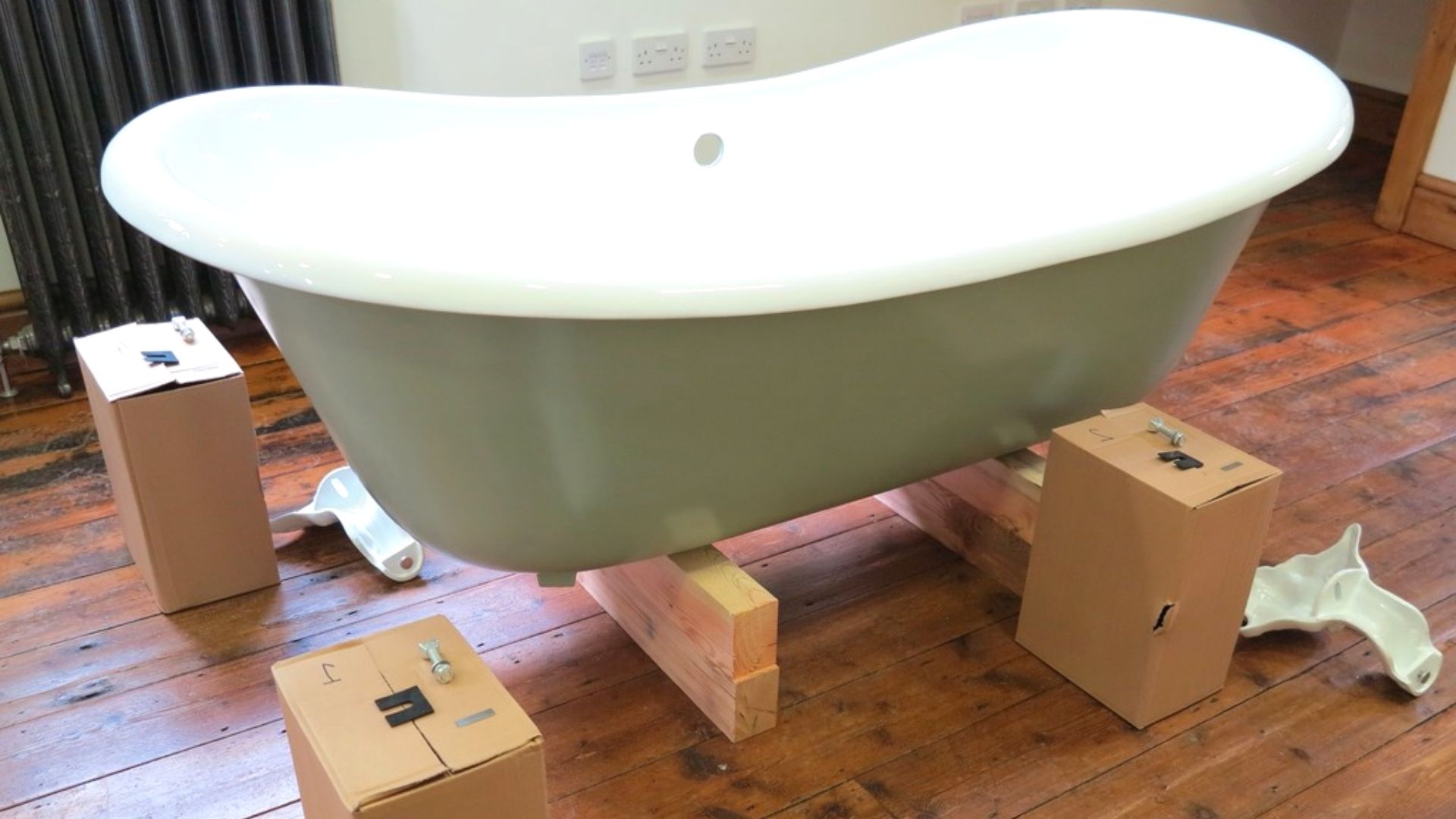7:00AM to 5:00PM
Are you in the middle of a bathroom renovation or home improvement? Maybe you’re considering an alcove bathtub for your new bathroom or another since there are many unique types and sizes to choose from, or you want to separate your tub from the back wall from years ago. But the question is, can you install a new bathtub on your own? It’s time to replace the old bathtub with a new one, and you’re thinking of doing it yourself.
Replacing an old bathtub is nothing new. Homeowners tend to go the DIY way when it comes to bathroom remodelling jobs such as faucet, backer board, and flooring replacements, or even sink maintenance and deep cleaning with the p trap. However, installing a replacement bathtub while keeping the rest of the plumbing intact is a more intricate and time-consuming project. Even a slight mistake in installing a bathtub can result in improper levelling of the new tub or might even damage plumbing fixtures or pipes.
In light of this, many people find bathtub installation risky and entrust it to a plumber to replace the old tub. However, here’s the accurate picture: following each step to install a bathtub meticulously without getting bogged down is quite easy.
That’s why we’re here to help you with a simplified approach to the procedure for bathtub installation. We’ll help make the installation easier. So, without further ado, let’s get straight to the deets to install a bathtub.
At the start, we’d like to give you a heads-up of some crucial factors you need to consider about the task of installing a bathtub as a whole:
As evident from above, you need to know some basics about installing the bathtub and replacing existing parts. So, let’s go over each of these essential know-how tub installations.

Answering some preliminary questions will simplify bathtub installation and your DIY project.
The first thing to do is determine whether the existing bathtub and its replacement will comfortably fit through the bathroom door. Naturally, if the width of the doorway is smaller, you will have to remove the door frame and cut a larger space out of the wall to ensure that the tubs fit through.
It’s also essential to figure out the space you have in the bathroom. After all, you’ll need to maneuver around to access different plumbing fixtures during the installation. In some bathrooms, removing the sink and/or toilet may be necessary to slide the tub.
Thirdly, you need to make sure the floors in the space are level. Note that you might need to level bathroom floors in older homes to ensure an ideal fit devoid of any rocking and cracking of the bathtub.
After you have found the answers to the above questions and made the preliminary preparations, it’s time to decide on the material you’ll need.
An essential consideration in this regard is the material of the existing bathtub, as that will determine whether you can handle the job alone. Units made of materials such as cast iron are heavy and, hence, more difficult to displace.
Additionally, if the bathtub is part of a one-piece unit, you’ll need to break it into several pieces to remove it. That’s why you might need to rope in another person for this. One-piece units are practically impossible to fit in existing bathrooms and are more suitable for new constructions.
Next, you’ll have to determine the ideal material for the replacement unit. Like other plumbing fixtures, bathtubs are available in various materials, each with advantages and disadvantages.
While acrylic tubs and fibreglass bathtubs are used in most homes as they’re lightweight and easy to handle, those made from enamelled steel and cast iron are sturdier but much heavier.
You’ll need to determine the essentials of the replacement tub and the surrounding fixtures, which will help complete the installation smoothly.
While purchasing a bathtub, remember that the bathtub drain assembly or location of the drain hole should be on the same side as the plumbing in your bathroom, depending on your settings, ensuring you don’t have to replumb the unit for the installation.
The rule of thumb in this regard is to buy a tub the same size as the existing one. That’s because even for a difference of as little as ¼ inch, you may have to adjust the walls to ensure the replacement tub fits perfectly.
For such adjustments, you can use furring strips or thinner cement boards. But it’s best to avoid such possibilities by carefully making the measurements.
After removing the existing tub, you will likely uncover some water damage. Mould, mildew, and water can affect the walls and underlayment due to continuous leakage from caulk lines.
So, be ready to replace some, if not all, of the insulation and underlayment on the floors and walls with new insulation, waterproof plastic sheets, and cement boards.
You can begin installing once you have purchased the replacement tub and made all the other preparations discussed above. Here’s how you should go about the procedure:

Access the pipes to turn off the water supply and remove the tub spout, overflow and waste drains. You might have to bore a hole in the wall adjacent to the unit or create access through the floor.
Next, you must remove the tub surround and caulking of the old tub and disconnect its flange from the studs on the wall. If you want to try to keep the tub in one piece, cut away the tub flange nailed to the studs, then tilt the tub on its side to facilitate easy removal.
Following this, level the floor as required and place the replacement unit to mark the height of the flange. Then, pull the tub out of that space.
Now, attach some ledger boards based on the flange height. Note that the tub will “rest” on these boards.
Proceed by dry fitting the overflow and waste drains or tub drain and the drain shoe, keeping the replacement on its side. Secure the joints using a sealant.
Now, you must install the tub by sliding it carefully to sit on the ledge board or cement board. After it’s carefully set, screw it tightly to the studs. Note: You cannot attach the cement board directly to the wall studs.
You should know that some units must be placed on mortar beds according to the manufacturer’s instructions. That’s why you must prepare one for such tubs before installing them.
Connect the drains to the pipes through the access drain hole. Screw the strainer cover over the drain opening in the floor of the tub and reattach the accessories like the faucet plumbing, tub spout and shower head, etc. Plus, you must replace leaking, broken, or worn parts.
Once all the sealant used for the connections has dried up, test the tub for leaks by filling it with water. Then, you’ll have to fix them as necessary.
The final step is to replace the tub surround with tiles or panels and seal the gaps using silicone sealant. Remember not to miss the joint between the tub and the floor.
That was all about the dos and don’ts of installing a bathtub on your own. By making appropriate preparations and choosing the right replacement tub for your needs, you’ll be able to get through the job smoothly.
Just make sure you have all the tools and materials ready when starting. If you have any other queries on the topic, please get in touch with us!
Till next time, take care!